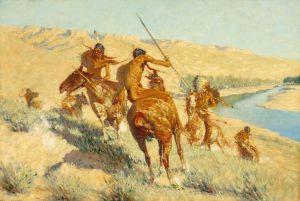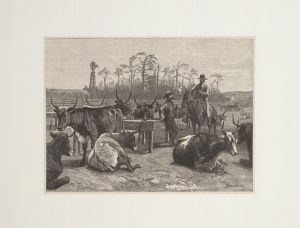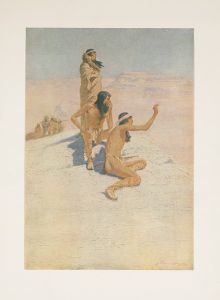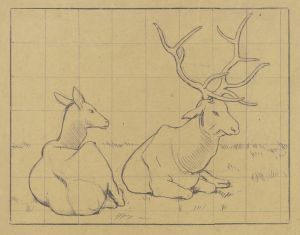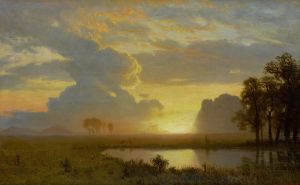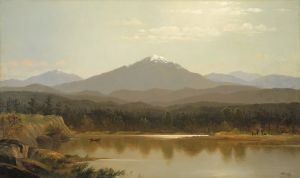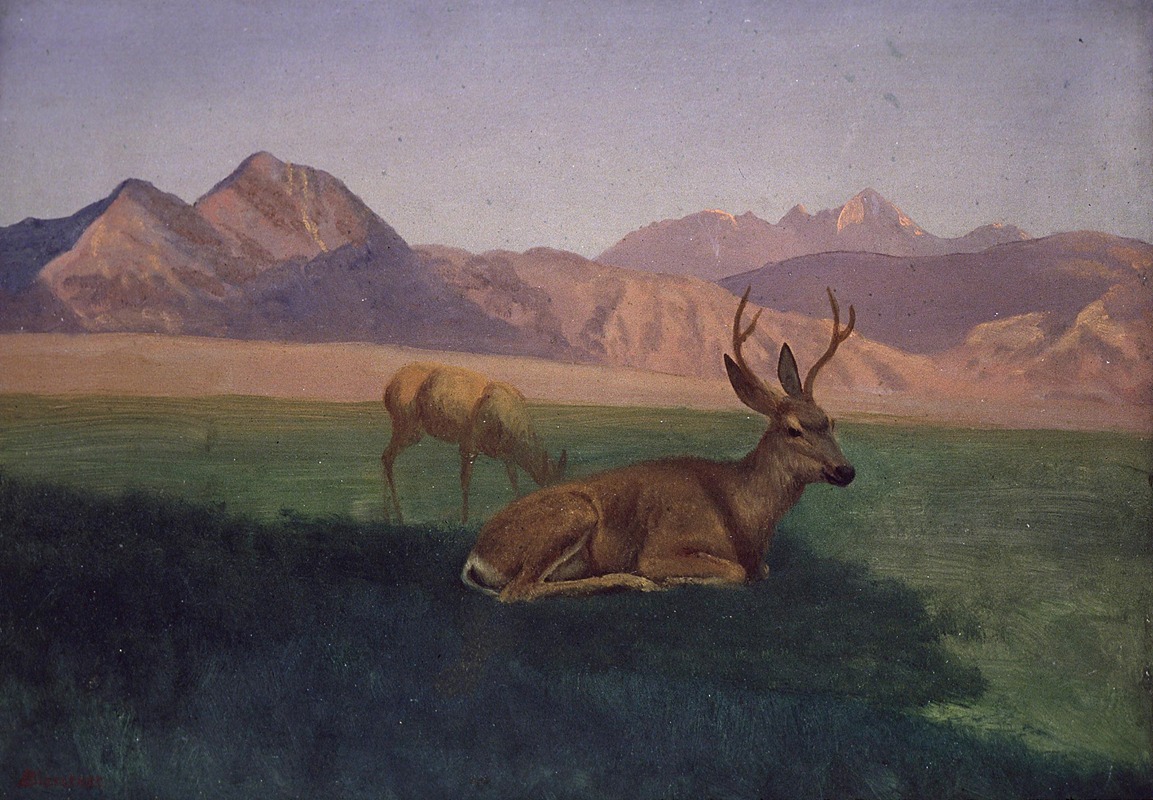
Deer
A hand-painted replica of Albert Bierstadt’s masterpiece Deer, meticulously crafted by professional artists to capture the true essence of the original. Each piece is created with museum-quality canvas and rare mineral pigments, carefully painted by experienced artists with delicate brushstrokes and rich, layered colors to perfectly recreate the texture of the original artwork. Unlike machine-printed reproductions, this hand-painted version brings the painting to life, infused with the artist’s emotions and skill in every stroke. Whether for personal collection or home decoration, it instantly elevates the artistic atmosphere of any space.
Albert Bierstadt was a renowned 19th-century American painter known for his grandiose landscapes of the American West. His works are characterized by their dramatic use of light and meticulous attention to detail, capturing the vastness and beauty of the American wilderness. Among his many paintings, "Deer" is one of the pieces that showcases his skill in depicting wildlife within these expansive natural settings.
"Deer" by Albert Bierstadt is a painting that exemplifies his ability to blend wildlife into the broader context of the landscape. While specific details about this particular painting are not as extensively documented as some of his larger works, it is consistent with Bierstadt's style of integrating animals into their natural habitats, highlighting the harmony and majesty of nature.
Bierstadt was born in Germany in 1830 and moved to the United States with his family at a young age. He returned to Europe to study painting in Düsseldorf, where he was influenced by the Düsseldorf school of painting, known for its detailed and finely finished landscapes. Upon returning to the United States, Bierstadt joined several expeditions to the American West, which provided him with the inspiration and material for many of his most famous works.
His paintings often featured the Rocky Mountains, Yosemite Valley, and other iconic landscapes, capturing the imagination of the American public and contributing to the romanticized view of the West during that era. Bierstadt's works were celebrated for their epic scale and dramatic use of light, often referred to as "luminism," a style that emphasizes the effects of light in landscapes.
In "Deer," Bierstadt likely employed his signature techniques to portray the serene and majestic presence of deer within a lush, natural setting. His ability to render the texture of fur and the play of light on the animals' bodies would have been evident, showcasing his keen observational skills and technical prowess.
Bierstadt's paintings, including "Deer," played a significant role in shaping the perception of the American wilderness during the 19th century. They were instrumental in promoting the idea of conservation and the establishment of national parks, as they highlighted the beauty and grandeur of the natural world that was at risk of being lost to industrialization and expansion.
Throughout his career, Bierstadt faced both acclaim and criticism. While his works were popular and fetched high prices, some critics argued that his dramatic compositions and use of light were overly theatrical. Despite this, his paintings remain highly regarded for their artistic merit and historical significance.
Today, Albert Bierstadt's works are housed in numerous prestigious collections, including the Metropolitan Museum of Art, the Smithsonian American Art Museum, and the National Gallery of Art. His legacy endures as one of the foremost painters of the American landscape, and his depictions of wildlife, such as in "Deer," continue to be appreciated for their beauty and technical skill.





